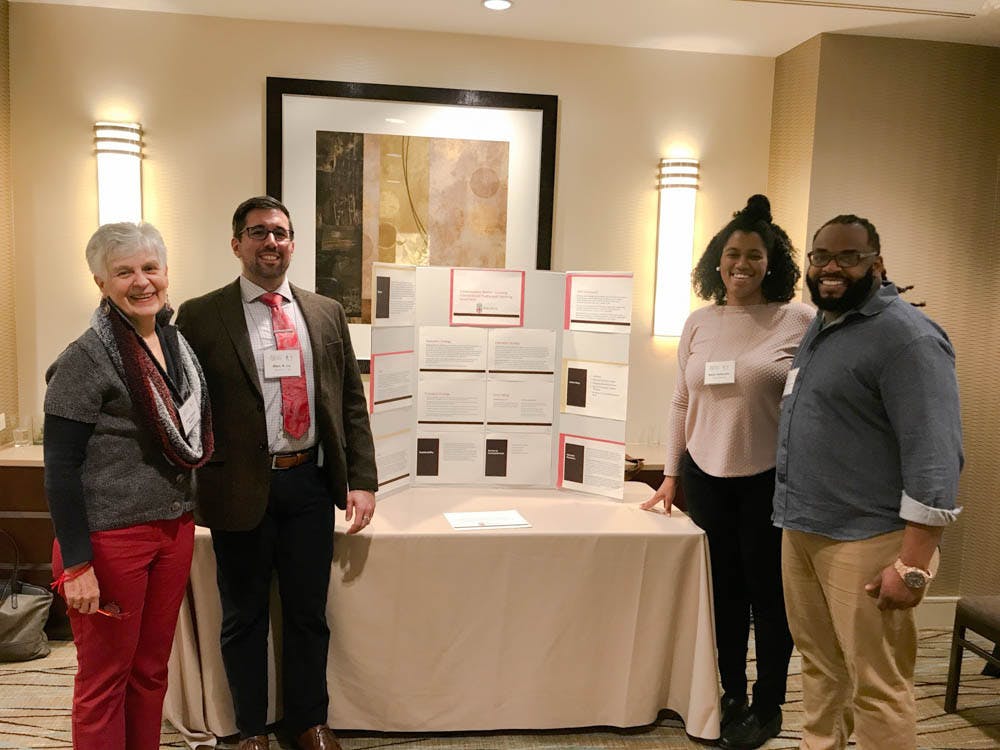Last month a six-member delegation consisting of students, faculty and alums represented the University at the 2018 Truth, Racial Healing and Transformation Institute in Washington. Attending the conference was a requirement of the $30,000 grant that the University received from the Association of American Colleges & Universities to become one of ten Truth, Racial Healing and Transformation Campus Centers in the United States, The Herald previously reported.
During the conference, the University delegation attended workshops, connected with other grant-receiving institutions and engaged in conversations about the advancement of racial healing.
The conference also provided the delegation with an opportunity to hear about the different approaches that schools have been taking to address racial healing on their campuses, said Marc Lo, assistant director for assessment and evaluation at the Sheridan Center for Teaching and Learning.
“There are folks who are just starting their work around documenting their campus’ history with slavery … (and others who are) raising questions about the indigenous land on which their campus sits. … Then there are folks in other locations who are developing a more nuanced narrative about what racial difference looks like there,” Lo said. “There are so many valuable approaches — you just have to find one that works for your place.”
The institute workshops covered a variety of topics, said Rev. Janet Cooper Nelson, chaplain of the University. The workshops “included everything from discussions about the racial history of the United States, to barriers in higher education that are created by systemic racism.”
Cooper Nelson, who helped write the University’s application for the grant, added that because the University is attempting to address the systemic racism that exists at Brown, the delegation demonstrated great interest in exploring how other institutions raised questions and ideas about the topic.
The institute also offered training sessions in more technical aspects of grant administration, Cooper Nelson said. For example, the session covered raising additional money, handling negative press coverage and implementing a methodology known as “racial healing circles.” Racial healing circles aim to move conversations about racial healing “away from argument and … ground (them) in individual narrative” instead, Cooper Nelson said.
At the institute, the delegation participated in a racial healing circle in which members sat “together in a circle and … talked about the ways in which … (we felt) represented in our race or gender (and) how that affects … day-to-day” life, said Maija Hallsmith, the program assistant for diversity initiatives in the Graduate School.
While engaging in the racial healing circle, members also “paired up … and talked about things like the first time (we) realized (our) race mattered,” she added. Racial healing circles create “appreciative networks of people who can hear each others’ narratives, however different they might be,” Cooper Nelson said.
After attending the conference, Cooper Nelson said she looks forward to advancing on-campus initiatives funded by the grant. As the primary overseer of the initiatives, she added that she hopes to expand the programs offered through the grant and to implement the ideas discussed at the institute on campus.
Along with the development of new initiatives, the grant will continue to fund the programs that began last year such as the discussion groups for female Muslim students and black students on campus.
By funding so many programs and initiatives, the grant can hopefully give students new opportunities to engage in conversations about race, Hallsmith said. “Race tends to be a topic that people veer away from or try not to delve into, … (and) this grant is allowing us to have spaces for people to (engage) where the pressure isn’t on them to start the conversation or to be right.”





